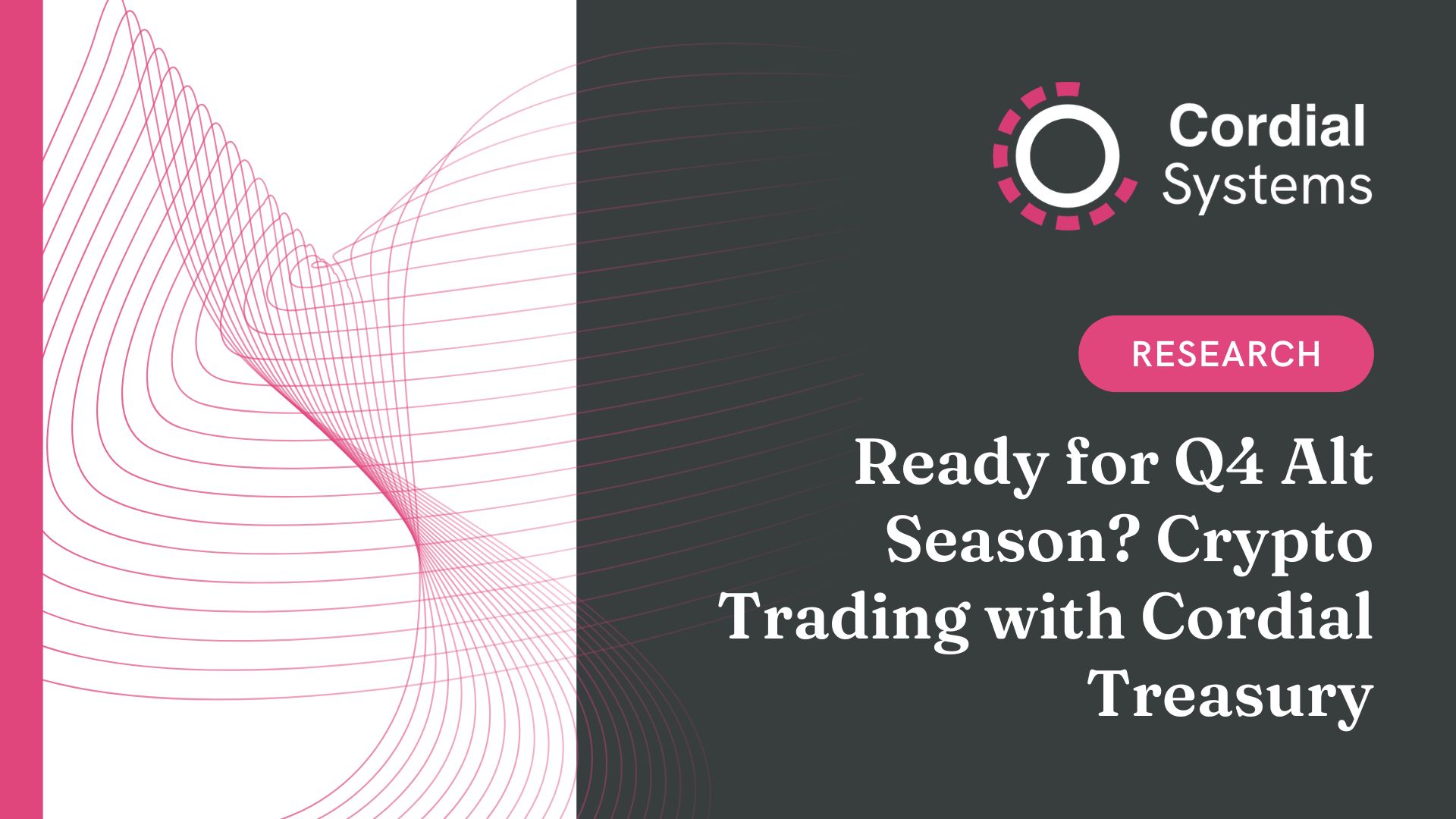
By Sebastian Higgs, Co-Founder and COO of Cordial Systems
July earnings season delivered an unusual headline: the conference calls of Citi, JP Morgan, Bank of America and Morgan Stanley spent as much time on stablecoins as on their core business. The sudden attention signals a step change. With Trump signing the GENIUS Act into law, the path is set for federal and state regulated stablecoins. For the big banks, dollar‑backed stablecoins are no longer an experiment but a direct challenge to the retail‑bank profit formula; and also an opportunity.
Starting with the threat. Retail banks rely on a low cost, sticky source of funding - customer deposits - which they pay little interest on. The bank in turn receives a much higher interest rate on the asset side of the business (loans, securities) which equates to a net interest margin, the main source of their profitability. Stablecoins threaten to pull deposits away from the banking world and drive up the bank’s cost of funding. Secondly, stablecoins can settle payments in seconds for fractions of a cent. This directly erodes the fee income streams banks enjoy relating to payments. Pull those two threads and there is a lot of profit risk.
How can the banks react? The answer lies in moving with the winds of change, specifically tokenised deposits. Tokenised deposits remain a liability on the bank’s balance sheet - potentially FDIC insured - and backed by the bank’s general pool of assets. Tokenisation moves the dollars onto blockchain rails to benefit from the technology innovation without disrupting their funding base. Banks like Citi, JP Morgan, and BAML won’t follow a sub custody model. They will retain private key management and the management of wallets in-house. The sections that follow unpack the threat in detail and show how a modern custody stack can turn it into opportunity.
Deposits Under Pressure
That vulnerability starts on the funding side. Retail banking thrives on low‑cost, sticky funding. Customers park money in the form of deposits that pay little interest, yet the bank invests those balances in loans and securities that yield far more. The spread is called net interest margin and it is a primary source of profit. Stablecoins upset this equilibrium. A business can hold USDC or PYUSD and pay suppliers instantly with minimal cost. Those coins are issued by a non-bank entity and fully backed by Treasury bills, which means the underlying dollars leave the fractional‑reserve system, and into a pool of money‑market instruments such as T-Bills. If enough deposits leak away, the bank must replace this near zero‑rate of funding with costlier certificates of deposit or wholesale borrowing. Margin shrinks; earnings weaken.
Payment Fees Lose Their Moat
Banks also earn billions from friction in today’s payment networks. Wire fees, card interchange and correspondent‑bank spreads all capitalise on speed or settlement risk. Stablecoins provide new technical rails which centralises the rules with the issuer - circumventing bank networks for value exchange. For the time being consumers prefer cards (the most profitable retail bank product) and there are many governance issues to resolve for the merchant along with certainty on conversion rates for stablecoins at point of sale. Stripe points to a more near term use case, operating in LATAM as well as Africa for recurring transactions. Banks will have to embrace the “right kind” of cannibalisation: keep consumer and business transaction volume within the bank-regulated ecosystem at all costs. Which means they will have to rethink real-time payments such as FedNow and think more about on-chain dollars.
Fungibility and Multi Rail Payment Hubs
Banks do have a few cards to play as well. For a digital instrument to count as cash, one tokenised dollar must be interchangeable with any other. That is unequivocally true inside the Federal Reserve system: a dollar at Chase equals a dollar at Citi. Today’s stablecoin landscape is messier. USDC on Ethereum is not automatically the same asset as USDC on Solana, and both differ from USDT anywhere. Bridging protocols, slippage and redemption fees introduce friction reminiscent of correspondent banking. It would be wise for banks to occupy the role of a multi-rail payment hub capable of real-time conversion and settlement between stablecoins, RTP like FedNow, card networks, and more. This is exactly what JP Morgan’s Onyx division is doing with their Kinexsys offering. It removes traditional treasury friction points and helps manage real-time liquidity through cross-border payments beyond currency cut-off or non-banking hours and includes blockchain deposit accounts. They even call it the “Global Payments 2 API”.
Tokenised Deposits: A Defensive Move That Preserves Funding
In that regard JPM is ahead of the pack and offers a blueprint for other banks, so we should spend a bit more time discussing their approach. In response to stablecoins, banks aim to restore fungibility and protect their balance sheets by issuing tokenised deposits. These instruments remain on the bank’s books, may qualify for FDIC insurance and redeem one‑for‑one into traditional deposits. They deliver instant settlement without draining the funding base. JPM Coin embodies the strategy, targeting wholesale clients rather than retail consumers. Citi Token Services pursues a similar template, streamlining cross‑border liquidity. Unlike public stablecoins, tokenised deposits do not swap high‑margin deposits for fully reserved, low‑margin alternatives; they translate deposits onto new rails. Both bank products operate on a permissioned blockchain, meaning access is controlled and restricted to authorized participants. Looking further ahead, expect to see public chains also used as a notary service - allowing private transactions to be confirmed directly on public chains.
The GENIUS Act Draws a Regulatory Line
When President Trump signed the GENIUS Act on 18 July 2025, the United States gained its first nationwide framework for payment stablecoins. The law mandates one‑hundred‑percent reserves in dollars or Treasuries, monthly disclosures and Bank Secrecy Act compliance. Crucially, it forbids yield‑bearing stablecoins. By blocking a checking‑account substitute that pays money‑market interest, Congress shields incumbents from a mass exodus of customer deposits. Because yield is off‑limits, expect stablecoin issuers to lure users with rewards, cash‑back programmes and loyalty points that mimic interest without violating the Act.
Besides that, the statute removes legal uncertainty yet leaves competitive pressure intact. The GENIUS Act will bring stablecoins to use cases outside of crypto trading settlement. Starting with B2B cross border payments and treasury management. Multinational corporations will move millions of dollars between subsidiaries in minutes instead of days, with full transparency and lower costs. Another will be the settlement layer of tokenised real world assets on-chain. A regulated on-chain dollar is required for instantaneous settlement (delivery versus payment).
Custody Risk and the Rise of MPC Wallets
Which brings us on to wallets and key management. Issuing a token is only half the battle, the private keys that sign messages to mint, redeem and transfer billions of value in stablecoin must do so compliantly. This requires welding two trust systems together: stablecoins which is a peer to peer value exchange and a claim on the issuer, together with an inter-bank process with operating agreements. Which is why banks in Europe and the US are working on issuing their own stablecoins and they will not follow a sub custody model, nor will they use a SaaS-based wallet solution they do not control.
First, the key wallet system needs to ensure correct payload construction and not rely on third party sources which is common in a lot of cryptocurrency wallets. A bank will have blockchain specific required fields (address, nonce, gas fee…) and also payment specific fields (debtor and creditor agents, execution date…) which will mirror classic SWIFT/BIC, e.g. JPMUS33, and similar fields. This will also be based on ISO standards such as ISO 4217 for currency codes.
Then there is the physical and logical security of the private key itself. Thresholded signatures and policy engines will be important to ensure correct key use and mitigate a single point of compromise. All of this must be 100% in the bank’s control so they will be running software in their own environment. This is essential. If a critical supplier suffers an issue on the vendor side, it’s still an incident report for the bank to complete - they can not delegate their compliance obligations. In that regard, Cordial Systems is already building the product that will be fit for purpose running locally at a custodian, CSD, or even a stablecoin clearing house following a TCH CHIPS model.
Wrapping Up
Stablecoins squeeze the two pillars of retail banking:cheap deposits and payment fees. Bank executives now see a twin track in how they are going about responding. The defensive path launches tokenised deposits. The offensive path treats stablecoins as a distribution channel for new services - could be consumers keeping balances in savings accounts and then leveraging instant issuance and redemption of stablecoins. New use cases, as seen in emerging markets, and most likely treasury management for multi-national corporations are some areas to keep an eye on. However none of this works for a bank without modern key management solutions and the correct operating model.
Cordial Systems builds that infrastructure so banks can move from PowerPoint to production long before the next earnings call forces them to explain their blockchain strategy. If your team is designing a tokenised‑deposit product, planning to issue or custody stablecoins, or modernising payment rails for 24 / 7 settlement, let’s talk.





